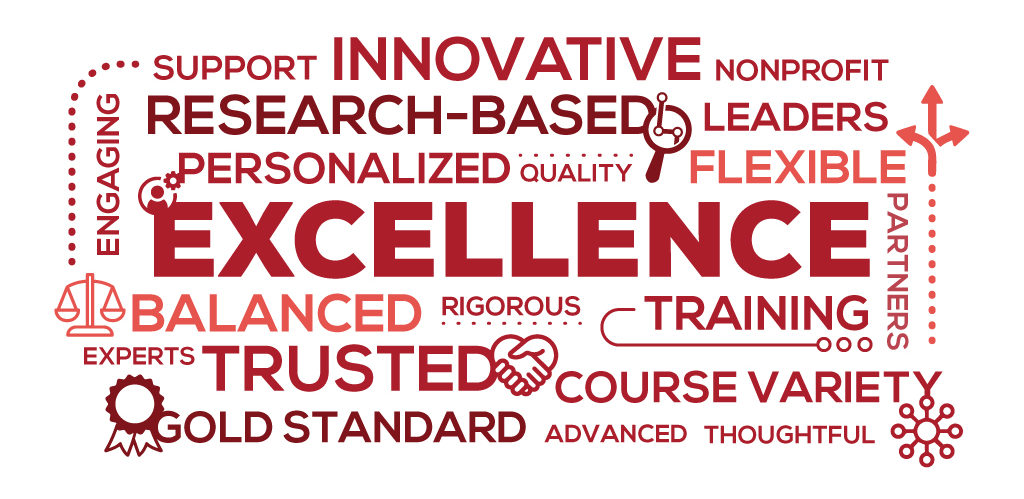4 Steps to successfully reach key stakeholders
A picture may launch a thousand ships, but a carefully crafted messaging strategy will help the ship arrive at its desired destination.
Many organizations are embarking on developing a messaging strategy so that their content better engages targeted audiences. For the online learning advocates, this endeavor will better connect them in a more meaningful way as well as differentiate high-quality programs from others.
The essences of message, once understood, is refined by understanding the organization’s brand, identifying key audiences, and shaping messages that resonate with them. Messaging as it relates to communications and audience interest means formulating the best content to engage others. The messaging must speak with relevance, meaning, and sincerity to the audiences the organization wishes to actively engage in their mission.
Step 1: Understanding & listening to targeted audiences
The most impactful messaging strategies are firmly based in research – both qualitative and quantitative. What content moves online educators to action? What pain points do they share? Do they share similar goals and a common vision for high-quality, online learning?
Let’s start with shared challenges for online programs. For Dan Morris of Colorado Digital Learning Solutions, a Virtual Learning Leadership Alliance member, defining and differentiating high-quality online learning continues to be a struggle. “It’s a struggle to truly understand what online learning means as it relates to support of students. Many district administrators are comparing “online” with the constant overlay to emergency learning during the pandemic, they are and should be different”
COVID-19 spurred an onslaught of districts scrambling to piece together emergency learning programs. This is in stark contrast to quality, online learning, according to Holly Bryzcki, supervisor of online learning for Pennsylvania’s Capital Area Online Learning Association. “Quality, online learning is set apart by the wraparound supports that we provide to both students and schools. The pandemic had everyone scrambling with no opportunity for forethought or a systemic rollout; it had to be done fast given the emergency.”
Given these insights, it quickly becomes evident that online educators’ key messaging must differentiate between the pandemic’s emergency learning characteristics and sustainable, quality online education. This distinction will help programs best communicate with school districts, administrators, legislators and other key audiences.
Step 2: Identifying common attributes
While quality, online learning programs each have their own unique brand, they do share many common traits. By extracting these, an organization can begin to build a foundation of messages that resonate with its stakeholders.
“Quality, online programs are as thoroughly planned and thought out as traditional education,” said Jason Neiffer, Ed.D., executive director of the Montana Digital Academy, another VLLA member. “State virtual schools have experience with a wide variety of student experiences. Plus, we use all the wonderful tool sets available for both students and teachers.”
Innovative, customizable, flexible, nonprofit, highly trained … all emerge as attributes shared by a variety of VLLA members asked to define quality online learning. The graphic below encapsulates the varying traits noted throughout the messaging research:
Step 3: Defining the audience, messages & platform
Equipped with differentiators and key messages, online educators can then construct a matrix to align each audience with engaging messages placed on the best communication platform. Outside of the more obvious target groups – school districts, educators and students – the program must regularly engage with state departments and legislators. These messages are custom tailored to educate and influence these important stakeholders.
“Among the messaging materials should be shared policy strategies at the state level,” said Morris. “We are all facing policy and legislative challenges in the coming year, and VLLA can provide leadership and education materials targeted at legislators.”
This idea garners support from online learning programs across the country, including Montana Digital Academy. “We need tools to differentiate between the state program and other models,” said Neiffer. “This can be a real challenge for states that have a lot of other choices. The lack of a profit motive is one significant difference.”
The strength of a messaging strategy lies in its ability to align key messages with each audience while delivering the content on the most impactful communication vehicles. For educators, these platforms can include targeted social media, webinars, educator resources, and conference participation. In contrast, when targeting the media, news releases, media advisories, story pitches, and interviews can effectively tell the story.
Step 4: Implementing the messaging strategy
With key messages in hand, an organization can prepare to launch its strategy. By developing thoughtful, relevant, and sincere messages, quality online programs will better define their brands and speak more directly to key audiences.
Tactical implementation includes creating a content that educates, differentiates, and further brands their online learning organizations. In addition to key messages, shared resources for program leaders offer a collection of best practices for consideration by other states.
Consistent, intentional use of the key messages is guaranteed to not only get that proverbial ship to shore but deliver all the good that comes from adopting a thoughtful, strategic approach to communication.


